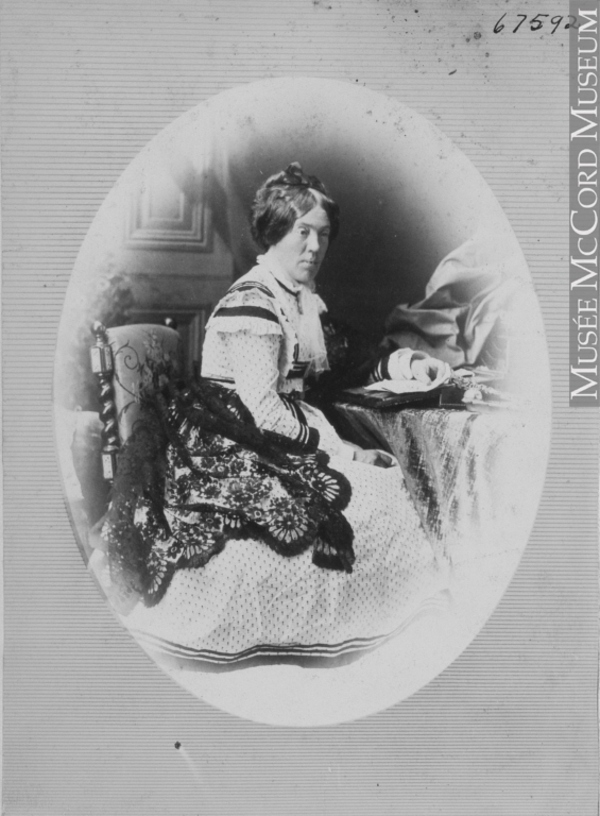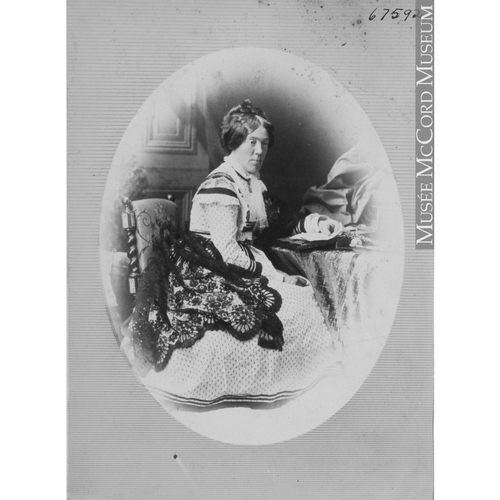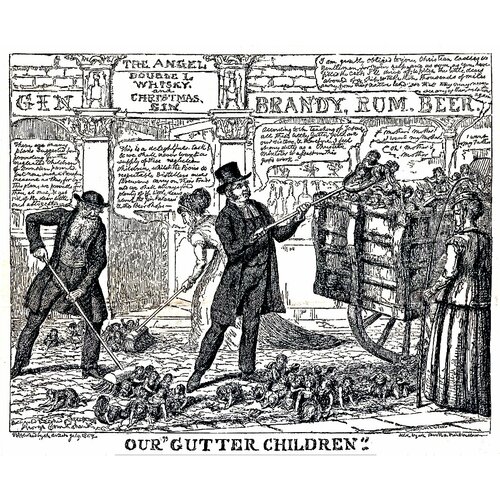
Source: Link
RYE, MARIA SUSAN, social reformer; b. 31 March 1829 in London, England, daughter of Edward Rye, a solicitor, and Maria Tuppen; d. unmarried 12 Nov. 1903 in Hemel Hempstead, England.
Maria Susan Rye was a leading figure in the mid-19th-century women’s movement in England, serving from 1855 to 1858 as secretary of the association that promoted the Married Women’s Property Bill and from 1859 as a founding member of the Society for Promoting the Employment of Women. In these years she worked with and for women of her own class. Both in her business as a law stationer, where women were employed as legal copyists, and through related firms, where others were trained as compositors and telegraphists, she strove to break down the regulations and social conventions that kept middleclass women from gaining economic independence.
More socially conservative than her colleagues in the employment society, with whom she would part company over the issue of female suffrage, Rye became concerned about the social and moral effects of women’s more prominent role outside the home. Contemporaries linked the predicament of unmarried gentlewomen in Britain to the marriage-market imbalance created by the emigration of more men than women. Rye herself argued that both Britain and the colonies benefited when gentlemen abroad were not obliged to marry beneath them. Between 1861 and 1867, under the auspices of the Female Middle-Class Emigration Society, of which she was honorary secretary, Rye travelled with parties of adult women to the Australian colonies and New Zealand.
In 1868 rising costs and adverse Australian publicity caused her to consider ports nearer to Britain, in Canada. Criticism by newspapermen and public officials of the suitability, supervision, and placement of the 200 women she transported up the St Lawrence River later that year led Rye to shift her attention, beginning in 1869, to the rescue of poorhouse and orphaned children, the work for which she is best known in Canada. Between 1869 and 1896 her agency brought 3,623 female children to the dominion, a large proportion of them wards of the English poor-law unions which sponsored their emigration, and placed them from the reception centre Rye operated in a converted court-house and jail at Niagara (Niagara-on-the-Lake), Ont. Rye handled the financial affairs of the home and seems to have travelled to Canada most years, even as she became older.
Unlike Annie Macpherson, who also began bringing children to Canada in 1869, and the majority of other British agencies and individuals who together brought perhaps 80,000 girls and boys to Canada over the next 50 years, Rye did not identify with any evangelical Christian group. A devout but traditional Anglican, she kept aloof from low-church enthusiasms. She was foremost a social engineer. In her writing for the National Association for the Promotion of Social Science and in frequent letters to the London Times, she showed a brusque detachment from her young charges and a penchant for the expedient. These tendencies led the senior Canadian emigration agent in Britain, William Dixon*, to characterize her in November 1868 as a “passenger agent of the sharpest description.” In a famous broadsheet the following year, George Cruikshank, the illustrator of Dickens, caricatured her shovelling lilliputian youngsters, “like so much guano,” into a giant mud cart.
Of the 1,100 girls Rye brought to Canada before 1875, all but 200 were pauper wards of the British state, and she hoped that the Local Government Board would take over the program. This prospect was scotched in 1875 when Andrew Doyle, the board inspector deputed to inquire into the Canadian circumstances of former workhouse children, singled out her placement methods for criticism as unsystematic and inattentive. Yet over the next two decades, with only brief interruptions when the apprehensions of the English Board of Guardians about her work became acute, she regularly brought parties of girls to Canada, protected by a receptive public there and by the interventions of well-placed British allies, including Lord Shaftesbury and the Marquess of Lorne [Campbell*] and his wife, Princess Louise* Caroline Alberta. From 1871 Rye received a civil-list pension of £70.
In 1895, by which time Ontario was beginning to examine the regulation of juvenile immigration [see John Joseph Kelso*], she transferred her distribution centres at Peckham (London) and Niagara to the Church of England Waifs and Strays Society, and retired with her sister to Hemel Hempstead. Maria S. Rye died of intestinal cancer in 1903 at their residence, Baconsthorpe.
Documentation on the career of Maria Susan Rye is provided in the author’s study Labouring children: British immigrant apprentices to Canada, 1869–1924 (London and Montreal, 1980).
Two pamphlets published in Canada in defence of Rye’s emigration work have been made available on microfiche by the CIHM and are listed in its Reg.: Charges made against Miss Rye before the Poor Law Board at Islington, and her reply thereto (n.p., [1874]) and Further letters furnished to the Department of Agriculture by Miss Rye, in rebuttal of Mr. Doyle’s report ([Niagara (Niagara-on-the-Lake), Ont.?, 1875?]).
Andrew Doyle’s charges, and Rye’s response to them, were published in pamphlet form and in G.B., Parl., House of Commons papers, 1875, 63, no.9: 255–98, Copy “of a report to the right honourable the president of the Local Government Board, by Andrew Doyle, esquire, local government inspector, as to the emigration of pauper children to Canada”, esp. 277, 284, 286; and 1877, 71, no.392: 19–36, Copy “of letter addressed by Miss Rye to the president of the Local Government Board. . . .” Doyle refuted Rye’s defence in 1877, 71, no.263: 1–18, Copy “of the reply of Mr. Doyle to Miss Rye’s report. . . .” Canadian listings for the three reports are available in Canadiana, 1867–1900.
NA, RG 17, A I, 25, no.2252. Times (London), 22 April 1875. DNB. DNZB. Lee Holcombe, Victorian ladies at work: middle-class working women in England and Wales, 1850–1914 (Newton Abbot, Eng., 1973). Andrew Jones and Leonard Rutman, In the children’s aid: J. J. Kelso and child welfare in Ontario (Toronto, 1981). Ivy Pinchbeck and Margaret Hewitt, Children in English society (2v., London, [1969–73]). Gillian Wagner, Children of the empire (London, 1982).
Cite This Article
Joy Parr, “RYE, MARIA SUSAN,” in Dictionary of Canadian Biography, vol. 13, University of Toronto/Université Laval, 2003–, accessed April 24, 2025, https://www.biographi.ca/en/bio/rye_maria_susan_13E.html.
The citation above shows the format for footnotes and endnotes according to the Chicago manual of style (16th edition). Information to be used in other citation formats:
| Permalink: | https://www.biographi.ca/en/bio/rye_maria_susan_13E.html |
| Author of Article: | Joy Parr |
| Title of Article: | RYE, MARIA SUSAN |
| Publication Name: | Dictionary of Canadian Biography, vol. 13 |
| Publisher: | University of Toronto/Université Laval |
| Year of revision: | 1994 |
| Access Date: | April 24, 2025 |





